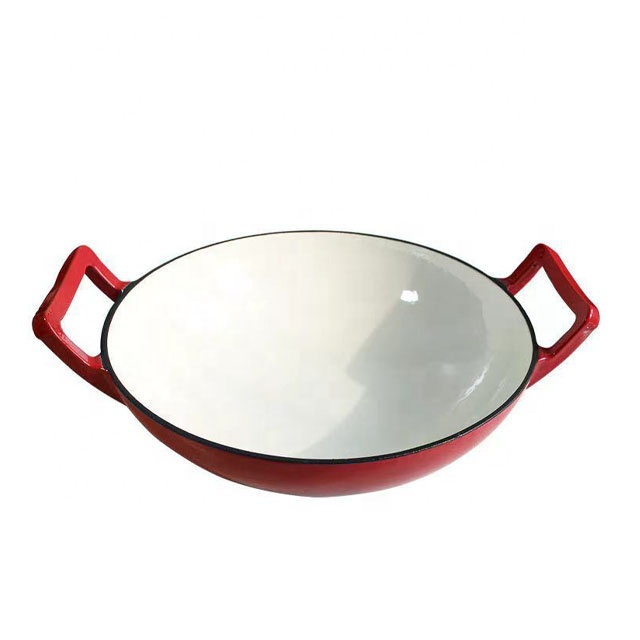
choosing a cast iron skillet
Choosing a Cast Iron Skillet A Comprehensive Guide
When it comes to versatile kitchen tools, few can rival the charm and utility of a cast iron skillet. Whether you're a seasoned chef or an enthusiastic home cook, a cast iron skillet is an exceptional addition to your cookware collection. However, choosing the right one can be a daunting task given the variety of options available. Here’s a guide to help you navigate through the selection process.
1. Understand the Materials and Construction
Cast iron skillets can vary significantly in quality based on their material and construction. Traditional cast iron skillets are solid and durable, often passed down through generations. Alternatively, enameled cast iron skillets offer a colorful enamel coating, which prevents rust and simplifies cleaning. When choosing a skillet, look for options that are heavy and thick, as these features enhance heat retention and even cooking.
2. Consider the Size
Cast iron skillets come in several sizes, commonly ranging from 6 inches to 16 inches in diameter. The right size for you will depend on your cooking needs. A smaller skillet is ideal for single servings or side dishes, while a larger skillet is perfect for family meals or when cooking for a crowd. A 10 to 12-inch skillet is often recommended as a versatile option for many households.
3. Check the Handle and Weight
A good handle is essential for safety and comfort while cooking. Look for skillets with a sturdy and well-attached handle that is easy to grip. Some skillets also feature a helper handle, which provides extra support when lifting heavier pans. As for weight, a heavier skillet may take some getting used to but provides better heat retention and stability on the stove.
4. Look for Seasoning
choosing a cast iron skillet

A well-seasoned skillet can make a significant difference in cooking performance. Seasoning is the process of applying a layer of oil to the cast iron and baking it, creating a non-stick surface. Many skillets come pre-seasoned, which can save you time and effort. If you opt for an unseasoned skillet, be prepared to season it yourself for optimal results.
5. Evaluate Brand Reputation and Reviews
Brand reputation can serve as a good indicator of quality. Brands like Lodge and Le Creuset are well-regarded in the cast iron cookware community for their durability and performance. Additionally, reading customer reviews can offer insight into user experiences regarding heat retention, non-stick properties, and ease of cleaning.
6. Price Considerations
Cast iron skillets are generally cost-effective, but prices can vary widely based on brand, material, and features. While opting for a cheaper skillet may seem appealing, investing a bit more in a reliable brand can lead to better performance and longevity, ensuring that your skillet lasts for years.
7. Usage and Care
Lastly, consider how you plan to use your skillet. Cast iron is highly versatile, suitable for stovetop, oven, and even campfire cooking. However, caring for your skillet is essential to its longevity. Regular seasoning, handwashing, and thorough drying are crucial to prevent rust and maintain its non-stick surface.
Conclusion
A cast iron skillet is an unparalleled tool for cooking a variety of dishes, from frying eggs to baking cornbread. By considering factors such as materials, size, handle design, and brand reputation, you can find the perfect skillet to suit your culinary needs. Embrace the timeless appeal of cast iron cooking and enjoy the delicious meals that await you!
-
Season Cast Iron Perfectly with GPT-4 Turbo TipsNewsAug.01,2025
-
High Quality Cast Iron Cookware - Baixiang County Zhongda MachineryNewsAug.01,2025
-
Premium Cast Iron Pan: Durable & Perfect HeatNewsAug.01,2025
-
High Quality Kitchen Durable Black Round Cast Iron Cookware Pancake Crepe Pan-Baixiang County Zhongda Machinery Manufacturing Co., Ltd.NewsAug.01,2025
-
Cast Iron Cookware - Baixiang County Zhongda Machinery | Nonstick, Heat ResistanceNewsAug.01,2025
-
High Quality Kitchen Durable Black Round Cast Iron Cookware - Baixiang County Zhongda Machinery | Non-Stick, Heat Retention, DurableNewsJul.31,2025


